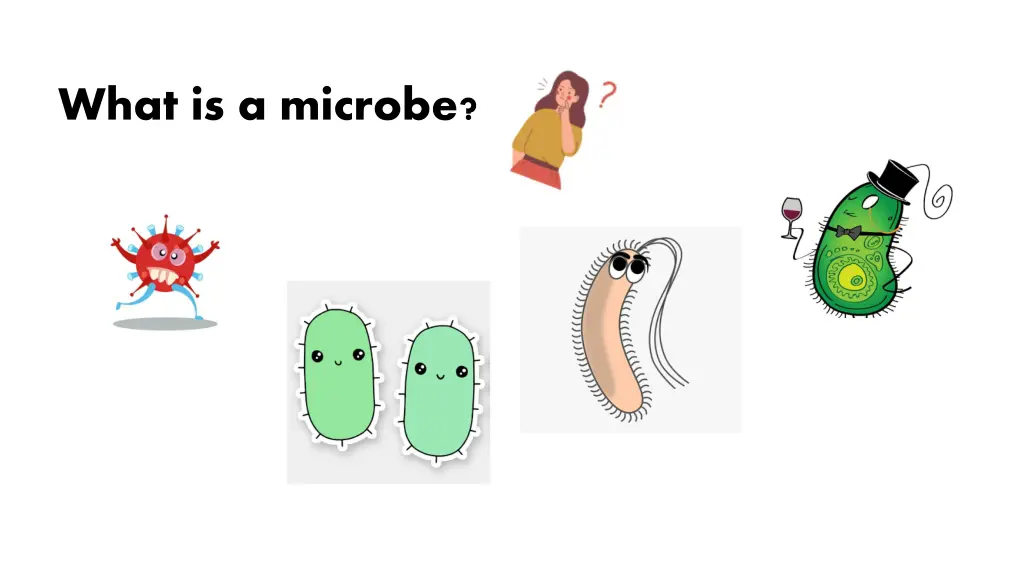
Exploring the World of Microbes and Gut Microbiome
Discover the hidden world of microbes, where they live, their surprising resilience, and how they impact our gut microbiome. Learn about the benefits of certain microbes and the consequences of disrupting gut homeostasis. Explore the crosstalk between gut microbiota and circadian rhythms, along with fun experiments to better understand these tiny organisms.
Download Presentation

Please find below an Image/Link to download the presentation.
The content on the website is provided AS IS for your information and personal use only. It may not be sold, licensed, or shared on other websites without obtaining consent from the author. If you encounter any issues during the download, it is possible that the publisher has removed the file from their server.
You are allowed to download the files provided on this website for personal or commercial use, subject to the condition that they are used lawfully. All files are the property of their respective owners.
The content on the website is provided AS IS for your information and personal use only. It may not be sold, licensed, or shared on other websites without obtaining consent from the author.
E N D
Presentation Transcript
Where do microbes live? Proper environment: humidity, temperature and gas Good energy resource: carbon and nitrogen
Exceptions Places You Would Never Expect To Find Bacteria The cleanest place on earth: Nasa Clean Rooms In our case, [the spacecraft] is the patient. technical deputy program manager said. An entirely new genus of bacteria was discovered in not one, but two NASA clean rooms. Named Tersicoccus phoenicis ( Tersi is Latin for clean), this bacterium has earned a reputation for outwitting the most intense industrial cleaners and sterilization techniques.
Boiling water Some bacteria, such as Clostridium botulinum, can survive in boiling water. Clostridium botulinum, which is responsible for botulism (a serious paralytic condition caused by a nerve toxin that can enter the body either through food intake or an open wound), prefers environments with relatively little oxygen, which is why it can grow and live in the most unnerving places, such as in your camp kettle or along the inside of a sealed can. it is best to use bleach, sodium hydroxide, and extreme temperatures (around 120 degrees Celsius) when trying to eradicate this pesky beast.
Questions: Did the video change your definition of what a microbe is? Are all microbes harmful or bad? How can some microbes benefit us?
An example of the consequence when the homeostasis in the gut is disturbed?
Crosstalk between the gut microbiota and circadian rhythms in the regulation of metabolism Gut microbiota also shows circadian rhythms in abundance Germ-free mice have distinct circadian rhythms Germ-free mice are leaner Obese people have different gut microbiota Fecal transplantation transfers the obesity phenotype Shiftwork Jetlag Mouse models Intestinal epithelial cells
Fun Experiments Germ-Glow Observing your microbiota


















